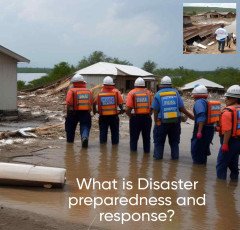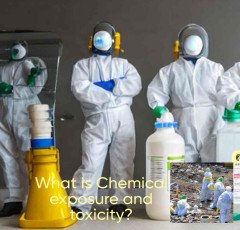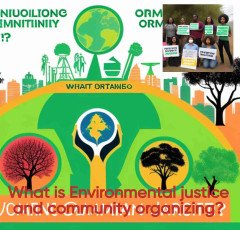
What is Disaster preparedness and response ?

The processes and actions carried out to lessen the effects of disasters and to efficiently respond in their wake are referred to as disaster preparedness and response.
Planning ahead and taking proactive steps to prevent, minimize, and respond to disasters before they strike constitute disaster preparation. This involves creating emergency plans, setting up early warning systems, and testing readiness through drills and exercises.
On the other hand, disaster response describes the steps taken right away after a disaster to preserve lives, lessen suffering, and aid in the recovery of impacted communities. Search and rescue, offering immediate medical attention and shelter, distributing food and water, and restoring the basics like transportation and electricity are all examples of response actions.
Collaboration between various organizations, such as government agencies, non-governmental organizations, and community groups, is necessary for effective disaster preparedness and response. By being ready and responding swiftly and effectively, the impact of catastrophes on people, property, and the environment is to be minimized.
Natural disasters like earthquakes, hurricanes, floods, wildfires, and pandemics as well as man-made disasters like industrial accidents, terrorist attacks, or cyberattacks are just a few examples of how disasters can manifest. As a result, different preparedness and response techniques will be used depending on the nature and location of the disaster.
Disasters can have unpredictable outcomes, and they can have devastating effects that result in human casualties as well as major damage to infrastructure and property.
To guarantee that people and communities are well-prepared for disasters and can recover swiftly, it is crucial to have comprehensive disaster preparedness and response plans in place.
Various activities can be included in disaster planning and response initiatives, such as public awareness campaigns, community-based training, and capacity building for emergency responders. As it helps individuals, communities, and organizations to coordinate their efforts and respond efficiently, effective communication is also a crucial component of disaster preparedness and response.
In general, emergency management's emergency planning and response are crucial elements that help to lessen the effects of disasters on people and communities.
We can prevent suffering, save lives, and aid in the recovery of impacted communities if we are ready and can act promptly.
Due to the escalating frequency and severity of disasters worldwide, disaster preparedness and response have grown even more crucial in recent years. While global interconnectedness raises the risk of pandemics and other man-made disasters, the effects of climate change are causing more frequent and powerful natural disasters.
Government agencies, non-governmental groups, private sector businesses, and communities must all work together in concert to prepare for and respond to disasters effectively. Working together is crucial to make sure that activities are coordinated and linked, as each of these organizations has a particular function to play in disaster planning and response.
The following are some essential components of catastrophe readiness and response:
The protection of people, property, and the environment in the event of disasters depends on disaster preparedness and response, which are crucial elements of emergency management. We can lessen the effects of disasters on people and communities and create a more resilient future by cooperating and taking preventative measures.
Important to keep in mind is that disaster preparedness and response are ongoing activities that need to be continuously monitored and assessed to maintain their efficacy. This entails routinely reviewing and revising emergency plans, spotting gaps and potential areas for improvement, and using lessons discovered from prior catastrophes.
Everyone in the community must actively participate in catastrophe preparedness and response.
This includes people who need to be aware of potential hazards and take precautions to protect their families from disasters as well as families and communities.
Developing resilient communities that can survive disasters and recover from them requires disaster preparedness and response.
We can lessen the effects of disasters on people, families, and communities by investing in disaster preparedness and response, which will lead to a better and more secure future for everybody.
The effects of disasters are frequently felt most keenly by vulnerable populations, such as low-income communities, individuals with impairments, and marginalized groups. The social and economic elements that raise susceptibility and the risk of harm during disasters must thus also be addressed as part of disaster preparedness and response.
This includes making certain that all community members, regardless of their background or situation, have access to and benefit from emergency response plans and services. The underlying social, economic, and environmental causes of vulnerability, such as poverty, a lack of access to healthcare, and poor infrastructure, must also be addressed.
In conclusion, disaster preparedness and response are crucial aspects of emergency management that call for a continuous and coordinated effort from all community members. We can lessen the effects of catastrophes on people, families, and communities and build resilience by investing in preparedness and taking proactive steps to reduce risks and build resilience. By doing this, we can all enjoy a safer and more secure future.
I can recommend some doable steps that people and communities can do to get ready for disasters as an AI language model. A few of these are:
Develop an emergency plan:
Create an emergency plan that includes escape routes, emergency contacts, and a strategy for communicating with close relatives and neighbors.
Prepare an emergency kit:
Prepare an emergency supply kit that contains items like water, non-perishable food, first aid kits, flashlights, and batteries, as well as other necessary items.
Stay informed:
To stay informed about potential threats and emergency circumstances, keep an eye on the local news and weather reports.
Be aware of your escape route:
Determine the quickest and safest escape path in case of emergency.
Participate in community-based preparedness activities:
Attend neighborhood gatherings and take part in training sessions and preparedness events to hone your abilities.
Individuals and communities can lessen the effects of catastrophes and enhance their capacity to respond appropriately in the case of an emergency by adopting these actions and being prepared for them.
Organizations, governments, and politicians can also take a number of steps to improve catastrophe preparedness and response. A few of these are:
Invest in efforts to reduce the risk of disasters:
Governments and organizations should fund projects to reduce the risk of disasters, such as enhancing early warning systems, enhancing infrastructure, and encouraging sustainable development practices.
Encourage coordination and collaboration:
Coordination and collaboration between many organizations and sectors are essential for effective disaster preparedness and response. Governments and organizations ought to collaborate to set up communication standards and plan joint responses.
Prioritize the needs of vulnerable populations:
In their disaster planning and response activities, governments and organizations should provide special attention to the needs of disadvantaged groups, low-income communities, and individuals with disabilities.
Integration of technology and innovation:
To enhance catastrophe preparedness and response, governments and organizations should integrate technical and innovative solutions, such as drones and artificial intelligence.
Conduct regular evaluations and reviews:
In order to identify opportunities for improvement and incorporate lessons learned from prior disasters, disaster preparedness and response plans should be routinely analyzed and reviewed.
Governments, organizations, and policymakers can improve disaster preparedness and response efforts, lessen the effects of disasters, and aid in the development of more resilient communities by implementing these steps.
It is important to note that disaster planning and response operations should also consider the possibility of cascading disasters or many hazards occurring at once or quickly after one another. For example, a pandemic may intensify the consequences of natural disasters like storms or floods, while a cyberattack may damage vital infrastructure and have further cascading effects.
As a result, disaster preparedness and response plans should be versatile and adaptive to a variety of scenarios, as well as taking cascading disasters into account. This calls for coordination and cooperation between many organizations and sectors, as well as regular training and drills to strengthen capacity and evaluate response strategies.
It should be noted that emergency management's crucial components of catastrophe preparedness and response call for continuous community coordination.
We can lessen the effects of disasters on people, families, and communities by investing in disaster preparedness and response, which will also help to build a more resilient future. However, efforts in disaster preparedness and response should also consider the possibility of cascading disasters and the demand for adaptability and flexibility in response planning.
Last but not least, it is important to remember that efforts to prepare for and respond to catastrophes should also focus on addressing their long-term effects. These effects may last for a long time after the main calamity has happened and may include financial, emotional, and bodily harm. Examples include the uprooting of families, the destruction of houses and livelihoods, and the survivors' psychological distress.
In order to help the recovery and reconstruction of affected communities, disaster preparedness and response initiatives should also focus on addressing the underlying causes of vulnerability and heightened risk of harm during catastrophes. This includes supporting sustainable development methods, investing in social and economic infrastructure, and tackling fundamental problems like inequality and poverty.
We can help everyone have a more resilient future by addressing the long-term effects of disasters and encouraging sustainable and equitable development. Disaster preparedness and response initiatives should be incorporated into larger development strategies and policies as part of a larger effort to create more resilient and sustainable communities.


















 Hanging Lights For Living Room
Hanging Lights For Living Room  Best Selling Books
Best Selling Books  Apple iPhone
Apple iPhone  ASPINAL LONDON
ASPINAL LONDON  Hot Bags For Pain Relief
Hot Bags For Pain Relief  Online Technology Classes
Online Technology Classes  Echo Dot - Smart speaker with Alexa
Echo Dot - Smart speaker with Alexa  NordVPN
NordVPN  Wall Lamp
Wall Lamp  Best Sellers On Amazon
Best Sellers On Amazon  Amazon Best Selling Products
Amazon Best Selling Products  All Wireless Products
All Wireless Products  TitTok Revolution
TitTok Revolution  Sennheiser
Sennheiser  Realme Smart Phone
Realme Smart Phone  Best Phone
Best Phone  Wristbands
Wristbands  Bathroom Mirrors
Bathroom Mirrors  Online Marketing
Online Marketing  Stylish Sneakers by Red Tape
Stylish Sneakers by Red Tape  ASUS Laptop
ASUS Laptop  Motion Sensor Light
Motion Sensor Light  Prime Video
Prime Video  RPM 3.0
RPM 3.0  Unreal Engine 5 For Beginners Learn The Basics Of Virtual Production
Unreal Engine 5 For Beginners Learn The Basics Of Virtual Production  1150+Trendy kids coloring pages Bundle
1150+Trendy kids coloring pages Bundle  Wireless Bluetooth Earphones
Wireless Bluetooth Earphones  NordPass
NordPass  Home Decor Items
Home Decor Items  Pet Care Products
Pet Care Products  Kitchen Tap
Kitchen Tap  Wireless Gaming Mouse
Wireless Gaming Mouse  NordLocker
NordLocker  The Secret Email System
The Secret Email System  Samsung Mobile
Samsung Mobile  SOFAS
SOFAS  Adidas Shoes
Adidas Shoes  Duke T Shirts
Duke T Shirts  Only For The United States
Only For The United States  Favorite Company (Cuelinks)
Favorite Company (Cuelinks)  Best Robotic Vacuum Cleaners
Best Robotic Vacuum Cleaners  Kitchen Daily Use
Kitchen Daily Use  Acer Laptop
Acer Laptop  Essentials for Gamers
Essentials for Gamers  Dual USB Car Charger
Dual USB Car Charger  Unlimited access to classes on illustration, photography, design, film, music
Unlimited access to classes on illustration, photography, design, film, music  Women Fashion
Women Fashion  Hello Theme
Hello Theme  One World Collection
One World Collection  iPhone cable
iPhone cable  SEO Checklist
SEO Checklist  Air Purifier for Home
Air Purifier for Home  Graphics & Design
Graphics & Design  Healthy Ingredients
Healthy Ingredients  ELECTRONIC ACCESSORIES
ELECTRONIC ACCESSORIES  Creative Brief For Video Shoot
Creative Brief For Video Shoot  Smart Doorbell
Smart Doorbell  Dell Laptop
Dell Laptop  4k Projector For Home
4k Projector For Home  Crocs
Crocs  The Click Engine
The Click Engine  Men Clothing
Men Clothing  Smart Watches
Smart Watches  HP Laptop
HP Laptop  Puma (Clothing & Accessories)
Puma (Clothing & Accessories)  Digital Voice Recorder
Digital Voice Recorder  LCD Writing Tablet
LCD Writing Tablet  Top Rated From Amazon
Top Rated From Amazon  Door Handle Collection
Door Handle Collection  Rakhi
Rakhi  Artificial Intelligence
Artificial Intelligence  Best Home Appliances
Best Home Appliances  BEST SELLER TOP10
BEST SELLER TOP10 


















